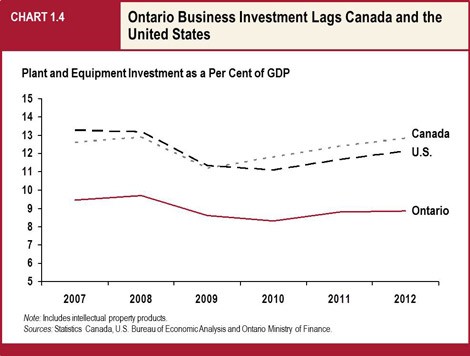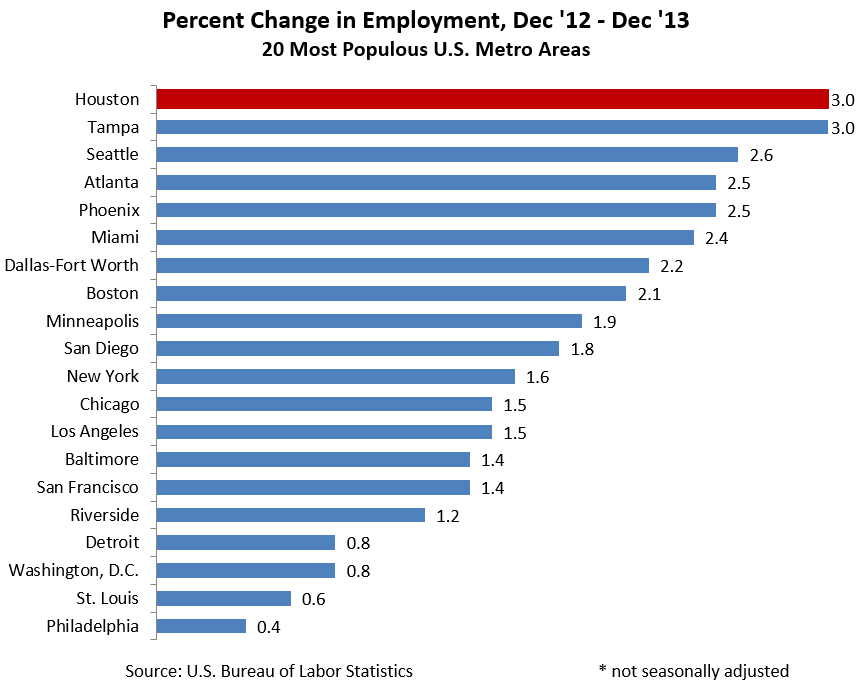United States The top 10 industries by employment growth
Post on: 16 Март, 2015 No Comment

Innovation, demographics and global demand, the main drivers of industries with the fastest employment growth
Going forward, employment growth will continue to exhibit significant disparities across industries
Energy, healthcare and education will experience some of the fastest employment growth rates
Introduction
Employment growth has been at the core of the debate around the U.S. economic recovery and the future of monetary and fiscal policies. The impact of the Great Recession was so strong that four years after the recession officially ended the economy has not been able to recover the approximately 7.7 million jobs lost between 2008 and 2010. However, at the industry level, the great recession showed significant differences in employment dynamics.
For example, while the construction industry registered a net loss of 1.5 million jobs, the healthcare industry added approximately 423,000. Because industries react differently to the business cycle, a discussion on job creation at the industry level becomes relevant. Moreover, given that states and cities alike seek to foster job creation by targeting high-growth industries that are believed to be the next engines of growth, discussing the structural factors that lead to successful industry clusters is also imperative.
Table 1 highlights the 10 industries with the fastest average annual employment growth rates from 2Q09 to 2Q13. We analyzed data from the Establishment Survey at the 3-digit NAICS code level except for Professional and Business Services and Education which are analyzed at the 4-digit level. This approach results in a comprehensive ranking of 105 industries. The top ten industries account for 10% of total payroll and were responsible for 51% of total net job creation during the aforementioned period. The average annual employment growth rate of these industries was 4.3% vs. -0.1% for the entire nation.
Industry drivers
The second part of our analysis attempts to understand what the drivers of these industries are and where they are heading. Our forecasts suggest that most of the highlighted industries are likely to experience a strong performance in the future.
Other Information Services (519). This industry includes companies that offer nonphysical products over the internet. In particular, internet publishing and broadcasting has received a major boost from an upward trend in the number of mobile internet connections. The advent and proliferation of internet-based advertising constitutes a major positive trend in this industry that includes big names such as Google, Yahoo or Facebook.
Educational Support Services (6117), Technical and Trade Schools (6115), and Other Schools and Instruction (6116). The recession has given a boost to institutions engaged in vocational education. A persistently high unemployment rate has prompted thousands of individuals to use vocational education as a way to gain new skills while waiting for labor market conditions to improve. Going forward, we are particularly positive with medical technicians and nursing schools, which are expected to grow significantly as a result of aging population, healthcare reform, and the consequent increase in the demand for healthcare.
The No Child Left Behind Act of 2001 (NCLB) increased the demand for educational support services over the past decade by promoting education reform based on new testing standards. As schools across the nation face pressures to increase educational outcomes of their student’s results and operate under strong budget constraints, companies engaged in educational testing, consulting, college selection and guidance counseling will experience significant growth. Technology applications such as on-line learning have strong potential as well because they reduce costs without scarifying the quality of outcomes. Education –along with healthcare- is expected to be one of the most “disrupted” industries in the following years.

Ambulatory Health Care Services (621). The percentage of the U.S. population aged 65 years and older will increase from 43.16 million in 2012 to 55.9 million in 2020 and 83.7 million in 2050. As a result, the demand for medical services that utilize technology and simplify the interaction between providers and patients will grow. Part of the efficiency derives from treatments being delivered on an outpatient basis both at hospitals, specialized centers, and. at home through home healthcare aides and nursing professionals.
In addition, doctors are increasingly forming group practices outside of hospitals, while mid-size and large firms reduce overhead costs by creating establishments across markets and serve more people. Finally, healthcare reform will increase the need to measure medical service quality and track patient outcomes to determine cost effective treatments. This trend will require large information technology and capital investments in the health care sector.
Oil and Gas Extraction (211), and Support Activities for Mining (213). Global demand supports revenue growth in the oil and gas industry. In the U.S. hydraulic fracturing and horizontal drilling have boosted oil and gas production, creating thousands of direct and indirect jobs across the energy supply chain. As a result, U.S. companies have built significant expertise in oil and gas production and have been able to export their knowledge to the rest of the world. Companies in oilfield services, for example, have a significant portion of their business overseas, which allow them to diversify revenue. As the U.S. continues to reap the benefits of a supply-driven energy sector (cheap fuel in house, increasing export capacity, etc.) and the global economy re-gains momentum, prospects for oil and gas extraction will remain positive.
Employment Services (5613). Expansion in employment services primarily reflects trends in temporary employment, which is a leading indicator of total employment. During economic downturns, firms tend to reduce their temporary workforce and lessexpensive payroll before considering cutting full-time jobs. In times of economic expansion, faster temporary job creation preludes better conditions in the labor market. The ongoing recovery period started with a strong temporary job growth, a result of the severe contraction during the recession and subsequent rebound afterwards. However, the rate has stabilized recently at around 6%, consistent with a better economic environment. Employment placement agencies, executive search services and professional employer organizations will experience growth as the unemployment rate increases the competition for available jobs and some industries continue to experience shortages of skilled workers.
Management & Technical Consulting Services (5416), Computer Systems Design & Related Services (5415). Both industries benefit from healthy corporate profits and ongoing investments in equipment and software. These trends will be reinforced by better economic conditions and ongoing technological progress. Going forward, U.S. firms are expected to continue investing in productivity enhancers in order to remain competitive in the global economy.
Bottom Line
Our ranking of industries based on employment growth confirms that industries that are positively driven by a combination of demographic trends, global demand and innovation are most likely to experience above average growth in the following years (table 2). However, because this analysis is based merely on employment, the ranking ignores other industries with strong potential such as freight transportation, medical device manufacturing or scrap metal recycling. The ranking also confirms our positive views on the healthcare and oil and gas industries, while shedding new light on opportunities emerging in education support services, and internet publishing and advertising. Going forward, we expect our list of top 10 industries to generate approximately 3.4 million jobs between 2013 and 2018. That is almost one of every three jobs created in the economy during the same period.














